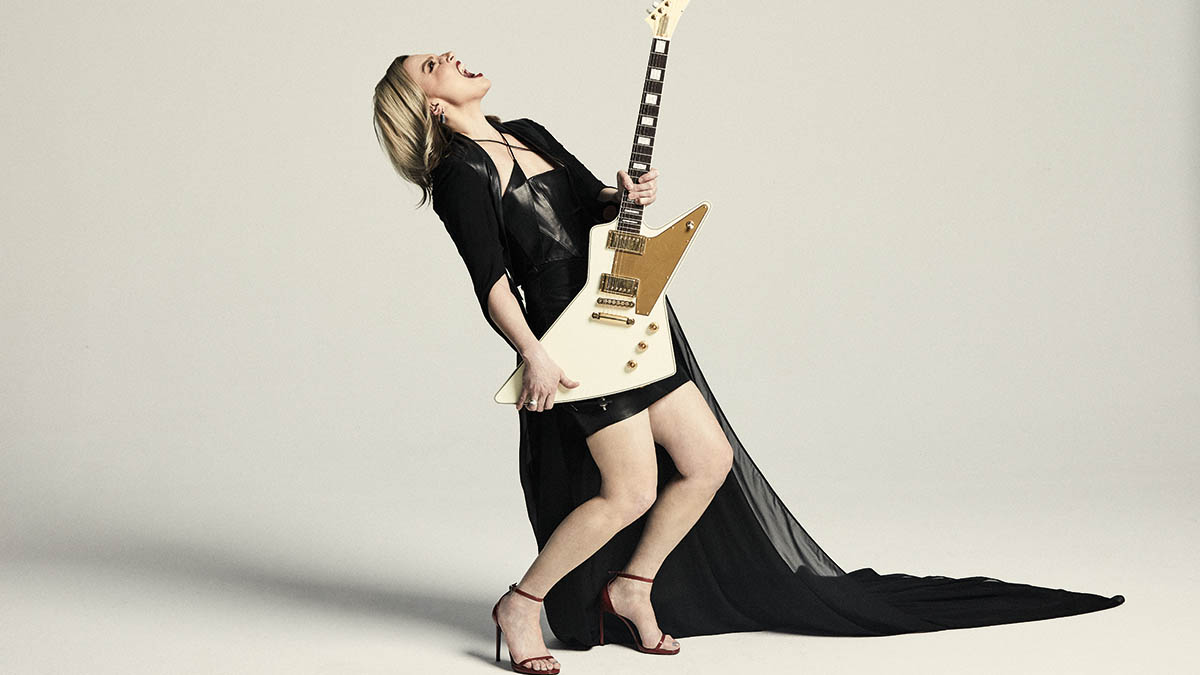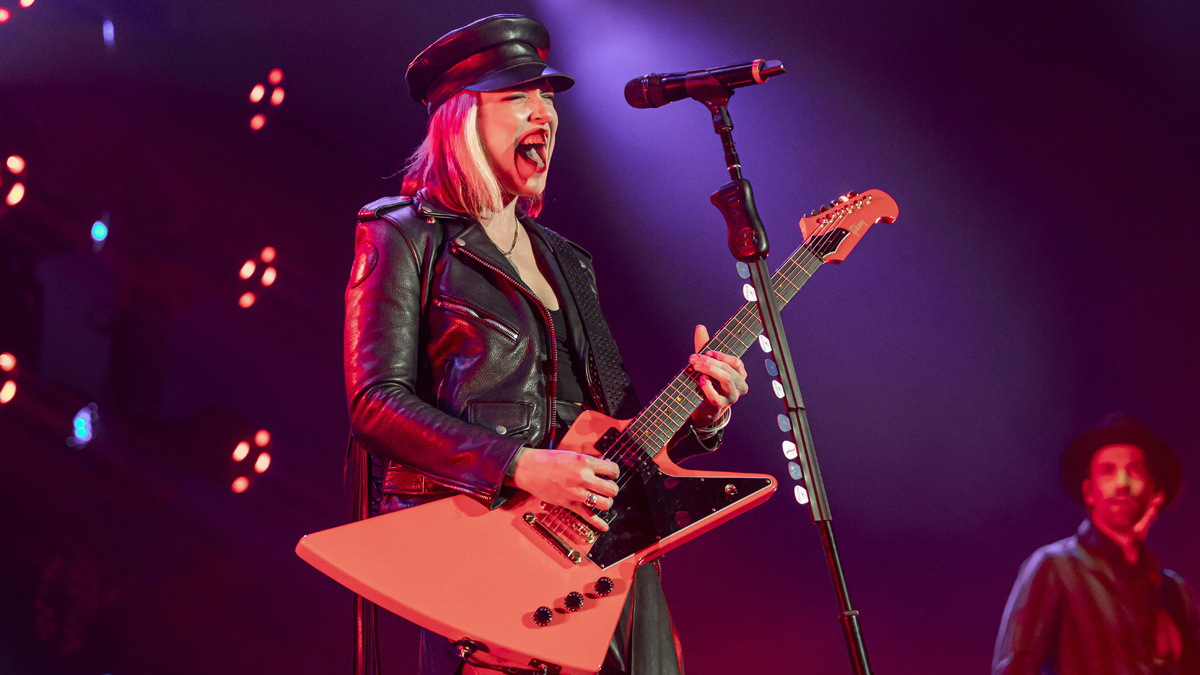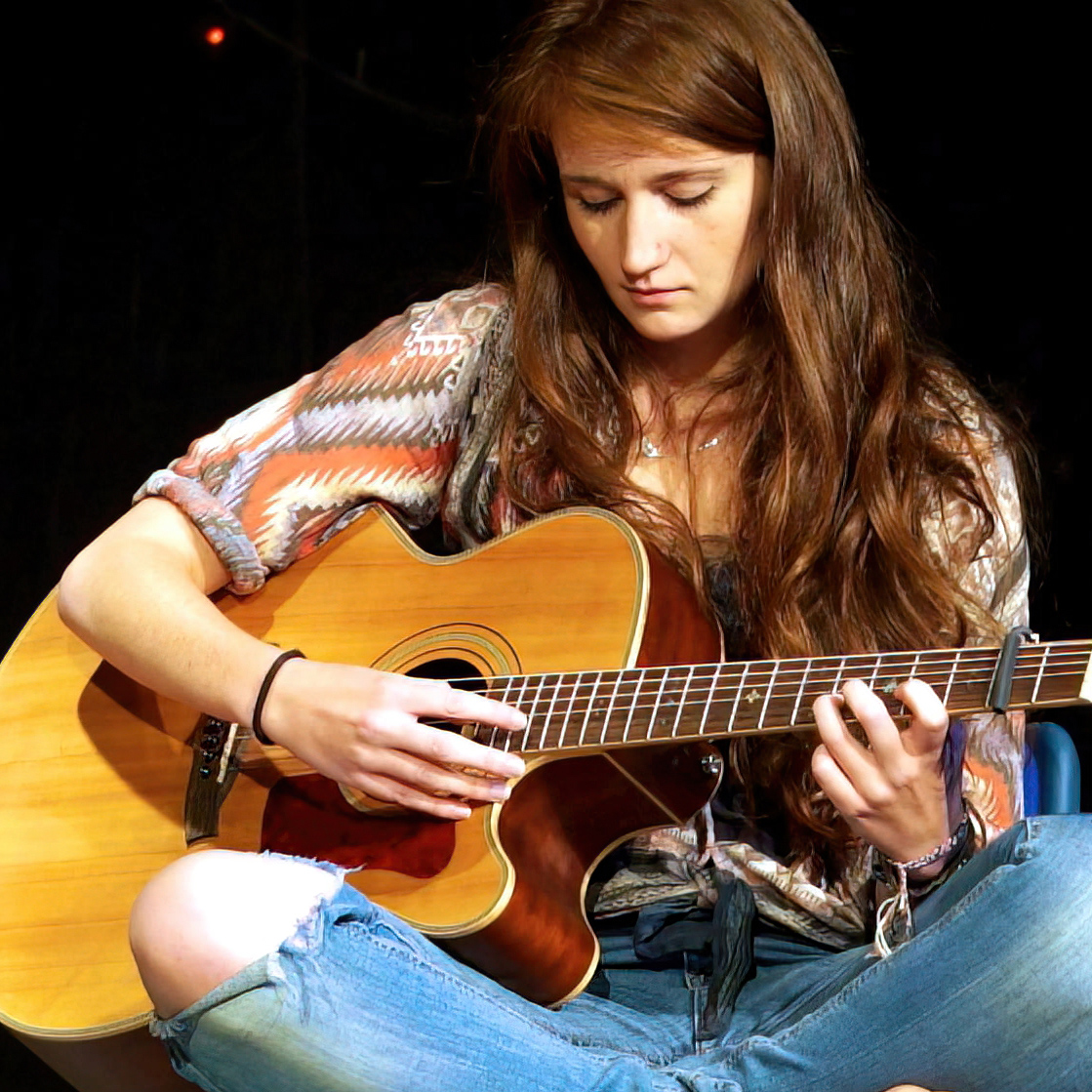Halestorm’s Lzzy Hale and Joe Hottinger on the restorative power of Gibson guitars, Marshall amps, and volume
The Halestorm guitarists discuss their “everything on 11” policy, making new album Back From the Dead, and working with Gibson on a fresh Explorer Bird guitar design

Over the past decade, Halestorm have earned themselves a reputation as one of the hardest working rock bands on the planet, often performing as many as 250 live shows a year.
Like most musicians, they had a tough time adjusting to an enforced life off the road, and guitarist/vocalist Lzzy Hale has described how she, in particular, “fell into a dark place and something of an identity crisis,” during the long, gigless months of lockdown.
Throughout these potentially fallow times, however, some major milestones were reached – most notably with Lzzy being officially inducted into the Gibson family as its first female Brand Ambassador back in July of 2021. Now, with the promise of a new signature guitar on the horizon, Lzzy is happy to be back on the road to promote Halestorm’s fifth studio album – the aptly titled Back From The Dead.
During a pre-soundcheck break on their UK tour, Lzzy and the band’s other guitarist Joe Hottinger are in buoyant mood as they talk about what it means to be on stage again.
“We’re playing shows like they’re going to be stolen from us,” Lzzy says, “and I think everyone’s coming to shows like it’s going to be their last. So, everything is on 11!”
“It’s just four of us making noise on stage,” adds Joe, “and we just go off. We don’t know when it’s going to end or where it’s going to land. You just kind of see what happens. That’s living!”
It’s clear they’ve really missed it. Likewise, the transformative, life-affirming power of rock ’n’ roll is the dominant theme that runs throughout the new album – right from the defiantly screamed opening lyrics of its title track, through to the triumphant, ‘lighters aloft’ album closer, Raise Your Horns. Rather than shrinking in the face of uncertain times, Halestorm have emerged stronger and louder than ever before.
Get The Pick Newsletter
All the latest guitar news, interviews, lessons, reviews, deals and more, direct to your inbox!
“It came together as probably one of our most cohesive albums,” Lzzy says. “And I think that’s because this particular collection of songs were the ones that were being written in the now. There wasn’t anything pre-Covid – it was all just whatever was happening to us at that moment, and whatever we were passionate about.”
The title track, Back From the Dead, not only set the tone for the creative process, but also serves as a mission statement for the whole album. “You have to almost be circling around a certain subject and certain feel,” explains Lzzy, “and you write three or four different songs with that same thing in mind – and maybe they don’t hit - then all of sudden it figures itself out, and all of the pieces of the puzzle are there.”
As Joe puts it, “Everything that we wrote kind of built up until Back From the Dead happened. Then it just all fell out.”
The band recorded the album in Nashville and Los Angeles, working with longtime collaborators Scott Stevens and producer Nick Raskulinecz, and they weren’t short of guitars to experiment with and be inspired by. Says Joe, “Between the two of us, we brought about 60 guitars to the studio. Nick had 20 or 30 sitting around, so we had about a hundred guitars all out.”
Joe also brought along his two vintage Marshall amps, and got to borrow from the “shit-ton of really cool amps” that Raskulinecz had in the studio. He explains: “For the main guitar sounds, we ended up recording two amps at the same time. It was usually my red 1971 Marshall Plexi, which is just so loud and obnoxious, and we’d mix that with either a Diezel VH4 or this 1987 Soldano 100 watt amp that sounded amazing.”
Lzzy interjects: “Don’t forget about the pile of pedals on the floor. It wasn’t even organised – it was just chaos!”
Asked if they discovered many new tones among all the gear that was literally laying at their feet, she recalls, “I think in a lot of these moments, you know the sound that you’re going for, but you have all of these options for getting there. Thankfully, Nick was there to be like, ‘Let’s combine the Soldano with the Marshall. Let’s try that green SG.’ It was a fun project because there were just so many toys.”

This being said, the pair didn’t stray too far from their tried-and-tested favourites, with Gibson Explorers for Lzzy and Gibson SGs for Joe featuring heavily throughout.
Added to the mix were also baritones for the riff-heavy material, as well as two of Gibson’s 1958 Korina reissue models. “They sound really great together,” Lzzy says. “So when I’m playing the Korina Explorer and Joe’s playing the Korina V, his is super-light and kind of chimey, and mine is really meaty, mid-range and darker. The combination is really cool.”
When you first start playing the instrument: you want a Gibson, you want a Marshall. You want meat and potatoes – those staples that you saw all of your idols slinging
Lzzy Hale
A Les Paul was used for the ominously dark tones heard in the opening moments of Bombshell – after what initially seemed like an unfortunate run-in with an overzealous guitar tech came good.
As Joe recalls, “We had this tech who over-tightened this vintage Les Paul tuning knob, and it just broke when I was tuning up the high E string. I had it plugged into an amp and the high E string just went totally slack. I kind of bumped it and started playing the riff.
“That’s why it sounds so slinky – it’s literally a high E string tuned down about three octaves. It was flopping just over the pickup and going through a heavy amp – it just sounded so frickin’ heavy, even on the tiniest string!”
On finding this unexpected gem of a tone, he explains, “When you’re in the studio, you’re already tuned-in. You’re listening all the time. So when something happens, you are prepared to accept it and you can hear what the final outcome could be.”
The common thread that runs through the impressive inventory of guitars we hear on Back From The Dead is, of course, the Gibson name. It’s no secret that, since the very beginning, both Hale and Hottinger have been utterly enamoured with the brand and its absolute synonymy with rock ’n’ roll cool.
Says Lzzy: “It’s the uniform that you want when you first start playing the instrument: you want a Gibson, you want a Marshall. You want meat and potatoes – those staples that you saw all of your idols slinging.”

It is, then, something of a dream come true for Lzzy to have been welcomed officially into the Gibson fold as the brand’s first ever female ambassador. She’d been approached by other would-be collaborators over the years, but always turned them down in the hope of landing the biggest fish of all. She laughs: “They were the ones I was waiting to ask me to the prom!”
Even before her ambassadorship, Lzzy worked with Gibson luthiers to design the Gibson Lzzy Hale Explorer – which comes in Alpine White – and what she calls its “evil twin”, the Gibson Lzzy Hale Dark Explorer, as well as her more bank account-friendly signature Epiphone Explorer.
On working with the guitar giants, she explains, “You always hope that maybe one day you’ll be able to design a guitar and put out something with your name on it. So, now that it’s become a part of my life, it blows my mind every time – especially with the wonderful people at Gibson.”
The partnership, which is indicative of a long overdue shift towards female representation in gear, has also spawned Lzzy’s latest Gibson signature model: the Explorer Bird – a guitar she promises will be “a different animal altogether”.
As its name suggests, the Explorer Bird – which Lzzy and Joe also refer to affectionately as “the Lzzy Bird” – is a hybrid guitar, which places a Gibson Firebird headstock on an Explorer body. The idea, laughs Lzzy, “was one of those hare-brained schemes” that tend to come about when she and Gibson’s Brand President, Cesar Gueikian, get together in a room.
She recalls: “I think it was at the NAMM right before lockdown – we were doing some projects with Gibson – and I mentioned offhandedly that it would be cool to have a Firebird headstock on an Explorer body. Then Cesar was like, ‘If you were to do something like that, what colour do you think it should be?’” At that point, Lzzy knew he was up to something.

The guitar, which is due to be revealed this year, will sport a red and black finish, with gold hardware and a pair of 1970s humbuckers – a divergence from Lzzy’s original signature Explorers, which feature Gibson ’57 Classic humbuckers.
The original prototype of the Explorer Bird already features in Lzzy’s arsenal, and it offers some interesting advantages in playability. “Actually,” she reveals, “I’m playing it in drop C right now for both Back From The Dead and our latest single The Steeple, because it just handles those low tunings really well. I don’t know if it has something to do with the headstock – but probably. It sounds really mean.”
As well as offering Lzzy the chance to work with Gibson on new designs, the ambassadorship also enables her to work on philanthropic endeavours and youth-focused education. “As an ambassador,” she says, “you’re taking this brand and you’re literally bringing it into people’s lives, regardless of their walk of life.”
Although she’s long been seen as a symbol of empowerment for young women in rock, her role with Gibson somehow makes it all the more ‘official’.
“It’s interesting,” she explains, “being the first female ambassador doing it because I feel like every time I get one of those titles - the first this or that – you’re the first through the door, and you’re a placeholder for whoever comes after you. You get to help normalise that as a female.
It’s important for young girls to see themselves in somebody like me, instead of thinking that they’re all by themselves, trying to make the dream happen
Lzzy Hale
She adds proudly: “The most beautiful thing about what I do now with Gibson is that you get to put yourself up there in a way that, for the generation of young girls that want to get into this instrument, makes the bridge to that dream just a little bit shorter – just like when I was younger and saw Joan Jett playing guitar, or Lita Ford or Nancy Wilson.”
Lzzy’s personality as a natural trailblazer, who has already led Halestorm to Grammy award-winning levels of success, stands her in good stead for continuing to pave the way for young artists by breaking down barriers and leading by example.
She explains: “It’s important for young girls to see themselves in somebody like me, instead of thinking that they’re all by themselves, trying to make the dream happen.”
Although progress towards female representation in the guitar industry has felt painfully slow at times, there is at long last a rapidly gathering momentum, and with players like Lzzy leading the charge from inside one of the world’s most renowned guitar brands, it can only grow and grow. As a final thought on the subject, Lzzy reflects on how far things have come since she first started out in the industry.
“Everybody is becoming a little bit more awake and a little bit more aware,” she says, “and it’s a testament, not just to the female guitar players and female musicians, but to the tour managers, the lighting technicians and the producers.
“All of these women have just been like, ‘Hey! I’m here and I’m really good at what I do, and it has nothing to do with what’s between my legs!’ The fact that we’ve been really loud about that for a long time, means, I think, that the next generation is going to have a little bit of an easier time, and that’s really cool.”
- Back From the Dead is out now via Atlantic.
Since graduating university with a degree in English, Ellie has spent the last decade working in a variety of media, marketing and live events roles. As well as being a regular contributor to GuitarWorld.com, she currently heads up the marketing team of a mid-scale venue in the south-west of England. She started dabbling with guitars around the age of seven and has been borderline obsessed ever since. She has a particular fascination with alternate tunings, is forever hunting for the perfect slide for the smaller-handed guitarist, and derives a sadistic pleasure from bothering her drummer mates with a preference for wonky time signatures.








![John Mayer and Bob Weir [left] of Dead & Company photographed against a grey background. Mayer wears a blue overshirt and has his signature Silver Sky on his shoulder. Weir wears grey and a bolo tie.](https://cdn.mos.cms.futurecdn.net/C6niSAybzVCHoYcpJ8ZZgE.jpg)

![A black-and-white action shot of Sergeant Thunderhoof perform live: [from left] Mark Sayer, Dan Flitcroft, Jim Camp and Josh Gallop](https://cdn.mos.cms.futurecdn.net/am3UhJbsxAE239XRRZ8zC8.jpg)
